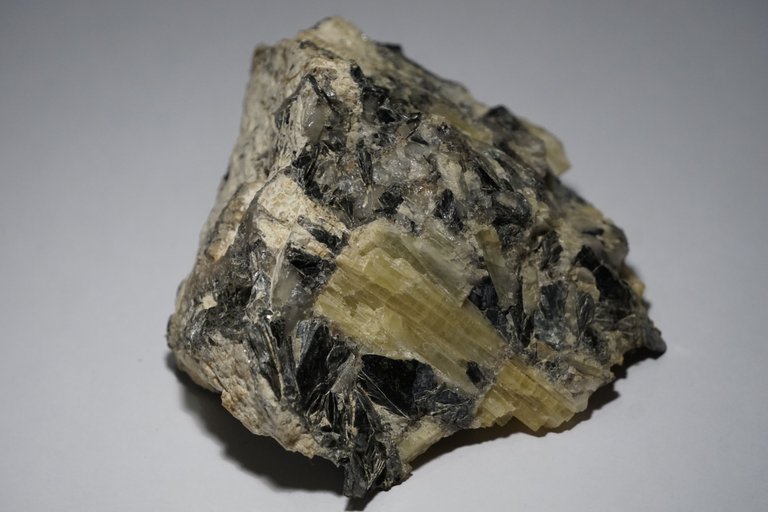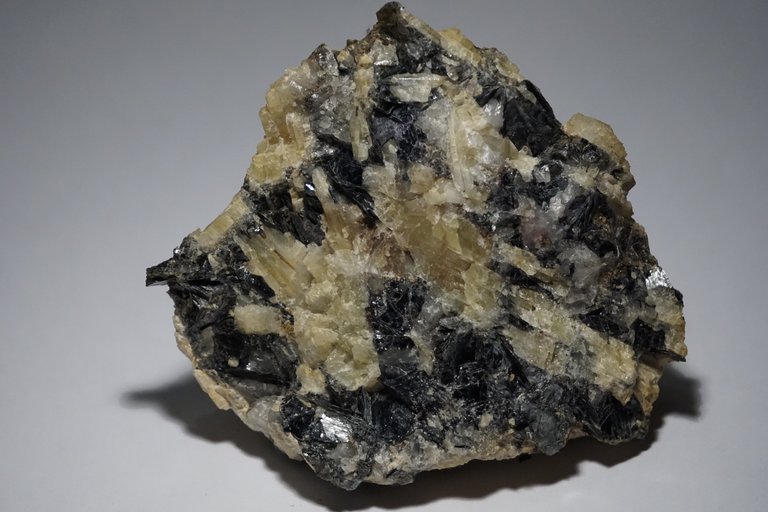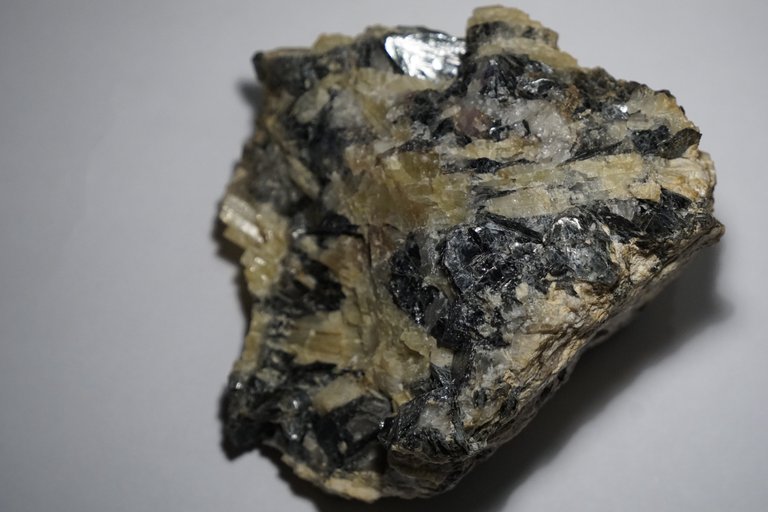Pyknite and Zinnwaldite Mineral
Good day dear Hive Community, I would like to welcome you all to my new post and hope you have a great start to the new week! In this post, I would like to go into a mineral in more detail and hope you can expand your knowledge.
An interesting specimen of Pyknite and Zinnwaldite can be seen here and Pyknite is a variety of topaz which is of magmatic origin and is also relatively rare to find and has a yellow, brown or green appearance. When it comes to the naming, the French mineralogist René-Just Haüy (1743 - 1822) referred to the Greek word pyknos, which means dense and refers to the appearance. The appearance is slightly shiny or transparent and among the best-known places of discovery are Sweden, Germany, USA, Pakistan or Mexico. Due to the rarity, Pyknite is used less frequently from an industrial point of view and is mainly of interest in collectors circles and in rare cases jewelry is also made from it.
The second mineral on this specimen Zinnwaldite was named after the first place of discovery in Germany in Zinnwald, which is located in the Ore Mountain Range and it is a representative of the mica group. If you would like to learn more about this group, I can recommend this contribution from me here, in which I have already discussed it in more detail. In the primary color, Zinnwaldite is white and the appearance is glassy or slightly transparent, but can also take on gray or red shades and can be found pretty much anywhere worldwide and is created under hydrothermal conditions and is usually found in pewter deposits. Zinnwaldite is particularly interesting due to the high content of lithium, which makes it very popular as ore for extraction and the industry usually processes it into lithium salts.
Depending on the specimen, it can contain 5% lithium, which makes it lucrative for many different industrial uses. Most of the lithium is used by the electronics industry where it is used to produce batteries or rechargeable batteries that can be found in many electrical devices such as laptops, smartphones or electric cars and bicycles. Lithium has become one of the world's popular raw materials and a large branch of trade has established itself and one of the most important exporters is Chile. A large part of the lithium is used by the glass and ceramic industry or for the production of catalysts or lubricants. Lithium is also used by the defense industry and is particularly important for the production of nano technology, but the pharmaceutical industry also uses it for the production of medicines.
Many thanks for stopping by and I hope you like my new contribution! I captured these pictures with my Camera Sony Alpha 6000 plus 55-210 mm lens!




Congratulations @elevator09! You have completed the following achievement on the Hive blockchain And have been rewarded with New badge(s)
You can view your badges on your board and compare yourself to others in the Ranking
If you no longer want to receive notifications, reply to this comment with the word
STOPCheck out our last posts:
Very good properties. I wish I would came to know that how they processed into working.
Glad to read your motivating feedback
Wow first time of seeing this element. It must rather be costly I strongly believe
Thanks for the comment
beautiful stone
Thanks :)
https://twitter.com/lee19389/status/1711404617219842133
#hive #posh
https://twitter.com/jewellery_all/status/1711485714536280156